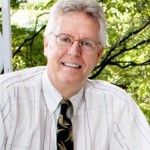With one week remaining in the semester and one event to go, we are already assured of doubling last year’s attendance in our Teaching & Learning Center’s professional development program. What did we do to improve campus participation? In truth, it wasn’t just one thing, but a combination of them. Of primary importance is the fact that our two-person (we lost an administrative assistant in a reorganization), faculty-facing CTL achieved greater funding and more personnel (a director, a tech, a media producer, and a part-time instructional designer) by merging with another academic unit, the student-facing Noel Studio for Academic Creativity—critical mass.
Of course, increased attendance is not our only goal, but even assessment to evidence value—faculty learning outcomes—can only occur after we’ve put those faculty bodies in our seats.
Six Suggestions for Improving Faculty Attendance
1. Create a name for your sessions. Make sure that the name emphasizes both a continuum of similar events and some aspect of your mission statement. As one of our favorite proverbs states, “The beginning of wisdom is learning to call things by their right names.” What had simply been labelled “Roundtables” became the Teaching & Learning Innovation Series (the TLI). “Teaching” and “Learning” obviously reflect our new unit’s facing both faculty and students, while “Series” suggests that professional development is more than a potpourri of one-shots, and we appeal to the “Collect the entire set” mentality. Importantly, the new name of the series captures the essence of our unit’s mission statement—“Helping Teachers Help Students Learn Deeply”—and allows us to brand or create an identity.
2. Try to theme your events with something valued by your audience. While the three of us are now primarily administrators, Hal and Charlie began as faculty, while Rusty still is, so we have a good sense of what faculty want as well as need. Since even at a minimum faculty try to stay current with higher education trends, the term “Innovation” implies they are getting things that happened after they left graduate school. In our specific case, the very name of the Noel Studio for Academic Creativity is the basis of innovation. Of course, a theme also unifies professional development.
3. Establish an electronic registration system. While we never turn away drop-ins, we prefer faculty pre-register for every event. Pre-registration provides a commitment on their part, and a list of participants first gives us an idea of how much material we need for them (e.g., food as well as how many books to order or articles to reprint). Google has made the pre-registration easy, and it provides valuable contact records because we always ask for an email address.
4. Publicize the events multiple ways. Prepare a base list of events in the semester before the series is held. We always provide physical and virtual copies of the entire schedule during New Faculty Orientation. We advertise the maximum times that our university’s daily electronic announcement system allows (in our case, EKU Today). Our pre-registrants receive personal emails about not only an event for which they registered, but every event in the series. Flyers for next event are handed out to faculty whenever they attend a workshop. At the conclusion of every event, we email our participants a toolkit—a list of resources, exercises, and strategies they can use. Our website lists the events. And Rusty tweets more than the birds flying inside our favorite big box stores, Lowe’s and Home Depot.
5. Utilize a workshop format. If faculty are going to surrender their time, they must feel they are receiving something worthwhile, and they must feel they are taking charge of their learning. Hence, the required active-learning format of workshops satisfies those needs. Most importantly, if we as professional developers are stressing an active-learning, mentor-from-the-middle model of instruction, we had best reinforce that concept at our own workshops. We insist all workshop facilitators employ some activities and interaction. In fact, we have a set of guidelines for facilitators on our website.
6. Try to use a variety of workshop facilitators. Our first choices are always our Faculty Innovators (about whom we’ve written much in the past) because they have been selected for their skills and been trained in effective strategies. Our second choice is the three of us, but while we know we can do the job, we’d prefer to solicit others (in fact, the three of us have facilitated our three highest-attended workshops in the TLI Series). For that reason we solicit workshops from faculty and administrators who have contacted us about some pedagogical strategy with which they have had success, and sometimes when the University’s every-other-week email comes out with a list of faculty publications and presentations, we solicit those people. Sometimes faculty bring their classes to the Noel Studio for a workshop for their students, get to talking with Rusty about what they are doing, and, voila, a TLI Series event is born.
In short, this year we have focused on reaching more faculty. The TLI Series has done that, but we have found other ways, something we’ll discuss in future posts.
Author
 Ph.D Hal Blythe writes literary criticism to mystery stories. In addition to the eleven books he’s published with New Forums, Hal has collaborated on four books on a variety of subjects, over 1000 pieces of fiction/nonfiction, and a host of television scripts and interactive mysteries performed by their repertory company. He is currently co-director of the Teaching and Learning Center for Eastern Kentucky University. Meet Hal Blythe.
Ph.D Hal Blythe writes literary criticism to mystery stories. In addition to the eleven books he’s published with New Forums, Hal has collaborated on four books on a variety of subjects, over 1000 pieces of fiction/nonfiction, and a host of television scripts and interactive mysteries performed by their repertory company. He is currently co-director of the Teaching and Learning Center for Eastern Kentucky University. Meet Hal Blythe.



